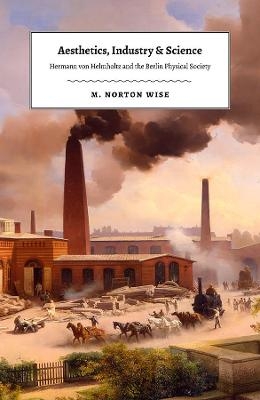
Aesthetics, Industry, and Science
Hermann Von Helmholtz and the Berlin Physical Society
Seiten
2018
University of Chicago Press (Verlag)
978-0-226-53135-9 (ISBN)
University of Chicago Press (Verlag)
978-0-226-53135-9 (ISBN)
An account of the rise of physical sciences in Berlin in the nineteenth century, and the role played by the larger cultural flowering occurring at the time—the ways that ideas cross-fertilized.
On January 5, 1845, the Prussian Cultural Minister received a request by a group of six young men to form a new Physical Society in Berlin. In fields from thermodynamics, mechanics, and electromagnetism to animal electricity, ophthalmology, and psychophysics, members of this small but growing group--which soon included Emil Du Bois-Reymond, Ernst Brucke, Werner Siemens, and Hermann von Helmholtz--established leading positions in what only thirty years later had become a new landscape of natural science. How was this possible? How could a bunch of twenty-somethings succeed in seizing the future? In Aesthetics, Industry, and Science, M. Norton Wise answers these questions not simply from a technical perspective of theories and practices but with a broader cultural view of what was happening in Berlin at the time. He emphasizes in particular how rapid industrial development, military modernization, and the neoclassical aesthetics of contemporary art informed the ways in which these young men thought. Wise argues that aesthetic sensibility and material aspiration in this period were intimately linked, and he uses these two themes for a final reappraisal of Helmholtz's early work. Anyone interested in modern German cultural history, or the history of nineteenth-century German science, will be drawn to this landmark book.
On January 5, 1845, the Prussian Cultural Minister received a request by a group of six young men to form a new Physical Society in Berlin. In fields from thermodynamics, mechanics, and electromagnetism to animal electricity, ophthalmology, and psychophysics, members of this small but growing group--which soon included Emil Du Bois-Reymond, Ernst Brucke, Werner Siemens, and Hermann von Helmholtz--established leading positions in what only thirty years later had become a new landscape of natural science. How was this possible? How could a bunch of twenty-somethings succeed in seizing the future? In Aesthetics, Industry, and Science, M. Norton Wise answers these questions not simply from a technical perspective of theories and practices but with a broader cultural view of what was happening in Berlin at the time. He emphasizes in particular how rapid industrial development, military modernization, and the neoclassical aesthetics of contemporary art informed the ways in which these young men thought. Wise argues that aesthetic sensibility and material aspiration in this period were intimately linked, and he uses these two themes for a final reappraisal of Helmholtz's early work. Anyone interested in modern German cultural history, or the history of nineteenth-century German science, will be drawn to this landmark book.
M. Norton Wise is distinguished research professor in the Department of History at the University of California, Los Angeles.
| Erscheinungsdatum | 10.07.2018 |
|---|---|
| Zusatzinfo | 34 color plates, 72 halftones, 6 tables |
| Sprache | englisch |
| Maße | 152 x 229 mm |
| Themenwelt | Literatur ► Biografien / Erfahrungsberichte |
| Kunst / Musik / Theater ► Kunstgeschichte / Kunststile | |
| Geisteswissenschaften ► Geschichte ► Regional- / Ländergeschichte | |
| Geschichte ► Teilgebiete der Geschichte ► Technikgeschichte | |
| Naturwissenschaften ► Physik / Astronomie | |
| ISBN-10 | 0-226-53135-X / 022653135X |
| ISBN-13 | 978-0-226-53135-9 / 9780226531359 |
| Zustand | Neuware |
| Haben Sie eine Frage zum Produkt? |
Mehr entdecken
aus dem Bereich
aus dem Bereich
Buch | Hardcover (2012)
Westermann Schulbuchverlag
34,95 €
Schulbuch Klassen 7/8 (G9)
Buch | Hardcover (2015)
Klett (Verlag)
30,50 €
Buch | Softcover (2004)
Cornelsen Verlag
25,25 €


